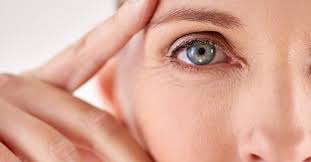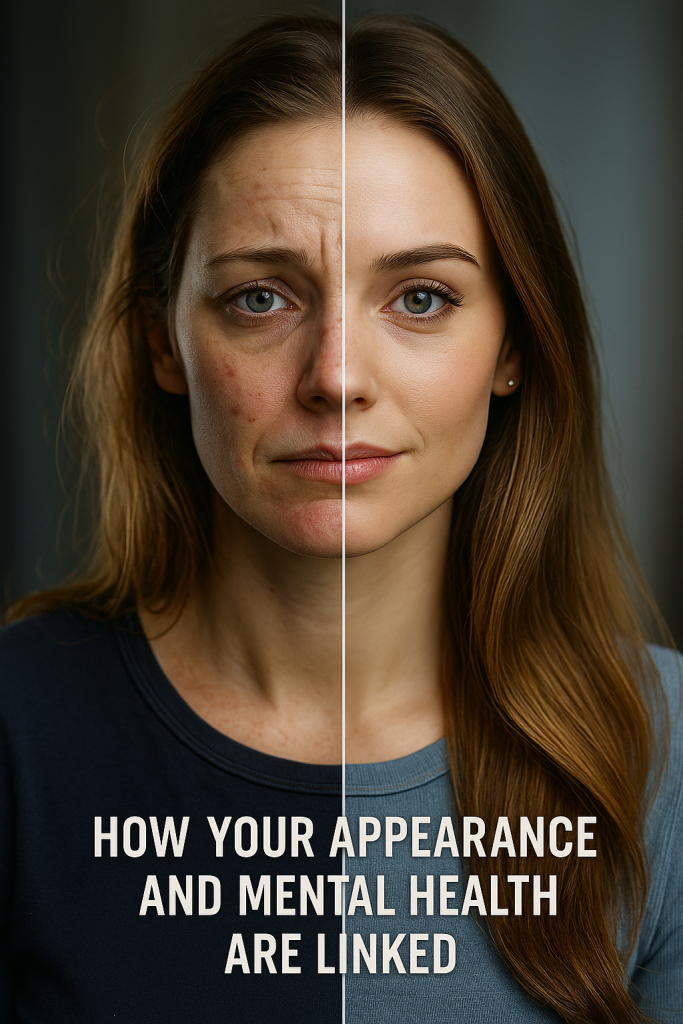Are you curious to know when entropion, the condition where your eyelid margin turns inward, typically starts? You might be surprised to learn that entropion is not a problem that only affects the elderly. While it is more commonly found in older individuals, there are other factors at play that can cause entropion to develop at various ages. In this discussion, we will explore the age-related causes of entropion, along with the symptoms, prevalence, and treatment options available. So, let’s uncover the truth about when entropion starts and what you need to know to protect your eye health.
Age-Related Causes of Entropion
As you age, one of the potential causes of entropion, the inward turning of the eyelid margin, is the natural aging process that affects the eyelids. Age-related causes of entropion are common and can lead to discomfort and visual impairment. Involutional entropion, which is associated with aging, is the most prevalent type of entropion. This condition occurs due to changes in the eyelid structures, such as laxity and weakening of the orbicularis oculi muscle. As a result, the eyelid margin turns inward, causing irritation and rubbing against the cornea.
Other causes of entropion include genetic factors, surgical procedures, and injuries to the eyelid. Genetic conditions like epiblepharon, ectropion uveae, Down syndrome, ichthyosis, and cleft lip and palate can contribute to the development of entropion. Surgical procedures and injuries that affect the eyelid, such as burns, lacerations, facial fractures, orbital tumors, and facial nerve paralysis, can also lead to entropion.
Symptoms of entropion include eye redness, excessive tearing, sensitivity to light, and a gritty or foreign body sensation in the eye. The prevalence of entropion varies by age and geographic region. In the general population, it is estimated to affect around 2% of individuals, but in some older populations, the prevalence can be as high as 20%.
Genetic Causes of Entropion
After discussing the age-related causes of entropion, it is important to now explore the genetic factors that can contribute to the development of this condition. Genetic predisposition plays a significant role in the occurrence of entropion. Familial inheritance has been observed in some cases, suggesting a genetic component. Certain underlying conditions, such as Epiblepharon, Ectropion Uveae, Down syndrome, Ichthyosis, and Cleft lip and palate, have been associated with an increased risk of developing entropion. These conditions can affect the structure and function of the eyelids, leading to the inward turning of the eyelid margin. It is essential to consider these genetic factors when evaluating patients with entropion and to assess their family history for any similar conditions.
Management options for entropion caused by genetic factors focus on addressing the underlying condition and correcting the eyelid malposition. Surgical correction is often necessary for a permanent repair of the eyelid margin. Nonsurgical treatments, such as lubricating ointments or taping the eyelid margin, may provide temporary relief. In some cases, botulinum toxin injections can weaken the protractors of the eyelid, providing temporary relief. It is important to consult with an ophthalmologist to determine the most suitable management option based on the individual’s specific genetic factors and overall health.
Surgical and Injury Causes of Entropion
Surgical and injury causes of entropion can result from various factors, such as eyelid burns, eyelid lacerations, facial fractures, orbital tumors, and facial nerve paralysis. These conditions can lead to the inward turning of the eyelid margin, causing discomfort and visual impairment. Here are three key points to understand about the surgical and injury causes of entropion:
- Eyelid burns: Burns to the eyelids can cause scarring and tissue contraction, leading to the inward turning of the eyelid margin. This can result in irritation, tearing, and a constant red eye.
- Eyelid lacerations: Injuries that cause cuts or tears to the eyelid can disrupt the normal anatomy and function of the eyelid, potentially causing entropion. Prompt medical attention and proper wound closure are essential to prevent complications.
- Facial fractures and orbital tumors: Trauma to the face, such as fractures or the presence of tumors in the orbital region, can disrupt the integrity of the eyelids and their supporting structures. This disruption can contribute to the development of entropion.
It is important to address these surgical and injury causes of entropion promptly to prevent further damage to the eye and improve the patient’s quality of life. Treatment options may include surgery to correct the position of the eyelid, as well as temporary measures such as taping the eyelid or using botulinum toxin injections to provide relief.
Symptoms of Entropion
Common symptoms of entropion include eye redness, excessive tearing, sensitivity to light, and a gritty or foreign body sensation in the eye. These symptoms can be quite bothersome and can impact your daily activities. Entropion occurs when the eyelid margin turns inward towards the eye, causing the lashes and skin to rub against the cornea. This can lead to corneal abrasions, ulcers, and other complications if left untreated.
To better understand the symptoms of entropion, here is a table summarizing its causes, diagnosis, complications, management, and surgical options:
| Category | Description |
|---|---|
| Causes | Aging changes in the eyelid, laxity of the eyelid, intermittent entropion that becomes constant over time, inward flipping of the eyelid, lower lid entropion |
| Diagnosis | Eye examination, including external and biomicroscopy evaluation, orbicularis override test, snap-back test, eyelid distraction test, digital eversion test |
| Complications | Corneal abrasions, ulcers, corneal opacification, severe vision loss, eye infections |
| Management | Nonsurgical options (lubricating ointments, bandage contact lenses), temporary measures (taping the eyelid margin, epilating inturned eyelashes), botulinum toxin injections |
| Surgical Options | Surgical correction (reattaching inferior eyelid retractor muscles, strengthening the lateral canthal area) |
It is important to seek medical attention if you experience any of these symptoms. Your eye care professional can diagnose entropion and recommend appropriate management or surgical options to alleviate your symptoms and prevent further complications.
Prevalence of Entropion
The prevalence of entropion, a condition characterized by the inward turning of the eyelid margin, varies among different populations and age groups. Here are some key points to consider about the prevalence of entropion:
- Prevalence by geographic region: The prevalence of entropion can vary depending on the geographic region. For example, in the UK, the estimated prevalence ranges from 0.9% to 2.1% in the general population.
- Ethnic disparities in prevalence: Entropion may be more common in certain ethnic groups. Research suggests that the prevalence of entropion increases with age and is more common in older individuals from specific ethnic backgrounds.
- Impact of entropion on daily activities: Entropion can cause significant discomfort and affect daily activities. The inward turning of the eyelid margin can lead to symptoms such as eye redness, excessive tearing, sensitivity to light, and a gritty or foreign body sensation in the eye. These symptoms can interfere with vision and quality of life.
Understanding the prevalence of entropion is important for identifying at-risk populations and implementing appropriate management strategies. In addition to surgical correction, non-surgical management options such as lubricating ointments and temporary measures like taping the eyelid margin can provide relief. By addressing risk factors and providing timely interventions, the impact of entropion on daily activities can be minimized.
Treatment Options for Entropion
When considering the treatment options for entropion, it is important to address the inward turning of the eyelid margin and its impact on daily activities and visual function. Surgery is the primary treatment for entropion, providing a permanent repair of the eyelid margin. Nonsurgical options such as lubricating ointments and bandage contact lenses can provide immediate relief, but they are temporary measures. Taping the eyelid margin or epilating the inturned eyelashes can also offer temporary management. Botulinum toxin injections weaken the protractors of the eyelid, providing temporary relief.
Surgical treatment involves reattaching the inferior eyelid retractor muscles and strengthening the lateral canthal area. Recovery time after entropion surgery varies, but most patients can expect improvement within a few weeks. Potential complications include discomfort and bruising in the lids, irritation caused by stitches that may require removal, infection of the eyelids leading to loose stitches and lid gap, and rare occurrences of eyelid scarring or outward turning of the lid.
Alternative treatments for entropion include everting sutures to temporarily stiffen the lid and botulinum toxin injections. Success rates of entropion surgery are generally high, with long-term outcomes showing improved eyelid appearance and function. It is important to consult with a healthcare professional to determine the most appropriate treatment option based on individual circumstances.
Primary Care Considerations for Entropion
To effectively manage entropion in primary care, prompt diagnosis and appropriate treatment are crucial to prevent permanent damage and improve patient outcomes. Here are three primary care considerations for entropion:
- Primary Care Management: Primary care providers play a key role in the management of entropion. They should be familiar with the signs and symptoms of entropion and have the necessary knowledge to make an accurate diagnosis. Primary care management involves educating patients about the condition, discussing treatment options, and referring patients to ophthalmologists for surgical intervention if necessary.
- Patient Education: Patient education is essential in the management of entropion. Primary care providers should educate patients about the causes, symptoms, and potential complications of entropion. They should also discuss the available treatment options, including nonsurgical options such as lubricating ointments and bandage contact lenses, as well as surgical interventions. Patient education can help patients make informed decisions about their treatment and improve overall satisfaction and compliance.
- Quality of Life Improvement: Entropion can significantly impact a patient’s quality of life, causing pain, discomfort, and visual impairment. Primary care providers should consider the potential impact of entropion on the patient’s daily activities and overall well-being. By promptly diagnosing and managing entropion, primary care providers can help improve the patient’s quality of life by reducing symptoms and preventing complications.





